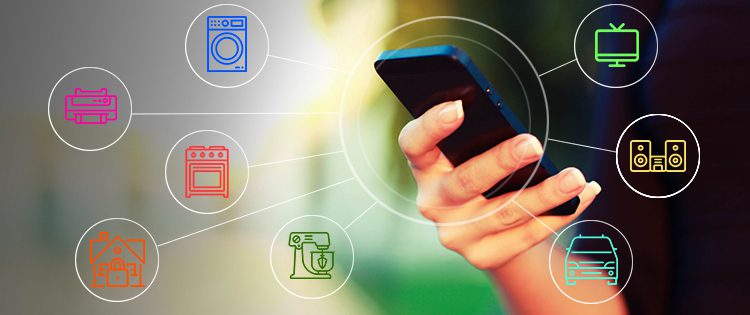The Internet of Things (IoT) is the network of physical devices, vehicles, buildings and other items embedded with electronics, software, sensors, and network connectivity that enables these objects to collect and exchange data.
The IoT is significant because an object that can represent itself digitally becomes something greater than the object by itself. No longer does the object relate just to you, but is now connected to surrounding objects and database data together with web services. Underlying the Internet of Things are technologies such as RFID (radio frequency identification), sensors, and smart phones.
When IoT is augmented with sensors and actuators, the technology becomes an instance of the more general class of cyber-physical systems, which also encompasses technologies such as smart grids, smart homes, intelligent transportation and smart cities. Each thing is uniquely identifiable through its embedded computing system but is able to interoperate within the existing Internet infrastructure.
“Things,” in the IoT sense, can refer to a wide variety of devices such as heart monitoring implants, biochip transponders on farm animals, electric clams in coastal waters, automobiles with built-in sensors, DNA analysis devices for environmental/food/pathogen monitoring or field operation devices that assist firefighters in search and rescue operations.
Smart appliances have been around for years, not just refrigerators, but washing machines, heating and cooling systems, lighting, and dishwashers too. Currently, Samsung is banking on its Smart Home platform while LG is offering mobile apps that essentially let users control their appliances via text message. Dozens of commercial, custom-install, and DIY home automation systems also qualify as part of the “Internet of Things,” whether that’s a home-security service offered by a cable company that can be monitored from a mobile device, a user-installable sensor station or Bluetooth-equipped smart locks.
Smart beds, the new mattresses can track your sleep. Sensors in your bed could notify other devices when you wake up in order to open drapes, switch-on lights, start coffee machine, etc.
Can’t cook? A smart grill will guide you through not burning food.
A bathroom cabinet that lets you know when it’s running low on toilet paper
The fridge tracks usage, alerts owners when they’re running out of groceries, or need more food since people are coming over to watch the game this weekend. Similarly, that smart fridge could warn about products nearing (or past) their expiration dates.
Smart closets could help you manage your clothes with reminders when you really ought to do laundry.
According to a report by Gartner there will be 30% increase in the number of connected devices in 2016 as compared to 2015 with 6.4 billion IoT devices entering the realm of internet of things. The number is further expected to increase to 26 billion by 2020.
What we do, how we do and when we do is never going to be the same when the physical environment around us gets lively and starts communicating.
Call or email us now and within 1-2 business days our technical team will offer you suitable proposal based on your requirements. Request a free quote today!

 INDIA
INDIA
 ITALY
ITALY
 GERMANY
GERMANY